Fall Calendar
Summer Stress
Shrubs &






Editor-in-Chief Stephanie Robinson Art/Design Doug Ryan Contributing Staff Madalyn Watt Stephanie Robinson Horticultural Experts Joey Lynn Watt Paul Noe





























Editor-in-Chief Stephanie Robinson Art/Design Doug Ryan Contributing Staff Madalyn Watt Stephanie Robinson Horticultural Experts Joey Lynn Watt Paul Noe






















Las Vegas, NV
Ann Road & Simmons 2600 W. Ann Rd. North Las Vegas, NV 89031 (702) 216-STAR (7827)
West Cheyenne & Tenaya 7330 W. Cheyenne Ave. Las Vegas, NV 89129 (702) 253-STAR (7827)
W. Charleston Blvd. & Cimmaron 8170 W. Charleston Blvd. Las Vegas, NV 89117 (702) 360-STAR (7827)
W. Tropicana & Fort Apache 9480 W. Tropicana Ave. Las Vegas, NV 89147 (702) 278-STAR (7827)
Boulder Hwy. & E. Tropicana 5340 Boulder Highway Las Vegas, NV 89122 (702) 435-STAR (7827)
S. Eastern & Pebble 8725 S. Eastern Ave. Las Vegas, NV 89123 (702) 333-STAR (7827)
Blue Diamond & Lindell 5380 Blue Diamond Rd. Las Vegas, NV 89139 (702) 444-STAR (7827)
Pahrump, NV
Buol Rd. & Hwy. 372 911 Buol Rd.
Pahrump, NV 89048
(775) 727-5300
Mesquite, NV
Commerce Cir. & Pioneer 549 Commerce Cir. Mesquite, NV 89027
(702) 613-4770
Star Nursery has been privately owned and operated for 40 years. We are proud to be the premier garden center for all your landscaping needs. Currently, we operate in Southern Nevada, Southern Utah and Northern Arizona with a total of 16 Garden Centers and 9 Decorative Rock Yards. We cater to both residential and commercial clientele.

Star Nursery offers the best in garden supplies. From a large assortment of trees to shrubbery, drought tolerant plants, succulents and houseplants, we have landscape material to suit anyone’s lifestyle. We offer the largest and most complete line of products that include irrigation supplies, gardening accessories, yard tools, succulents, houseplants, pottery and our very own exclusive line of Dr. Q’s Garden Products. This line of products consists of soils and fertilizers that are specifically formulated to help you succeed with your gardening efforts in the Southwest Region. We also carry a selection of hardscape products ranging from flagstone and pavers to decorative rock and bulk soils. Find everything you need to maintain a beautiful landscape or garden space. We pride ourselves in giving our customers the right price and best advice.
Star
St. George, UT Sunset Blvd. & Bluff St. 1145 W. Sunset Blvd. St. George, UT 84770 (435) 688-STAR (7827)
Dixie Dr. & Gubler Ln. 1335 S. Dixie Dr. St. George, UT 84770 (435) 674-STAR (7827)
Washington, UT Telegraph Rd. & 500 W. 385 W. Telegraph Rd. Washington, UT 84780 (435) 986-0820
• Planting – Fall is a great planting season for all varieties of trees and shrubs! If you’re planting deciduous vines and groundcovers, be sure to get them established before cold weather sends them into dormancy. For seasonal color, plant garden mums!
• Watering – Reduce your watering schedule to a maximum of three days a week.
• Fertilize – Labor Day weekend is a great time to fertilize your lawn, roses, citrus, and fruit trees! Consider using an organic fertilizer such as Dr. Q’s Organic Fertilizer Line on edible plant varieties. If you have palm trees, remember that September is the last month of the year that you can fertilize.

• Lawns – Aerate, dethatch, overseed, and add about a half inch of top dressing (anytime in September-November). For more information, reference Star Note #830 – Spruce Up and Over-Seed Your Lawn
• Roses – Light pruning is recommended after temperatures are below 100 degrees Fahrenheit. Hold off on heavy pruning until January.
• Palms – Prune only damaged or dead palm fronds. Do not over-prune, as it will stunt food production and consumption. Additionally, some palms may be chlorotic this time of year. If a palm is suffering from chlorosis, you’ll notice a yellowing of leaf tissue due to a lack of chlorophyll. Possible causes include poor drainage, damaged roots, compacted roots, high alkalinity, and nutrient deficiencies. To treat, use Dr. Q’s Ironworker.
• Desert Trees – Clean up unwanted suckers and dead or broken branches. Hold off on heavy pruning until Spring (after the last chance of frost).
• Perennials – Continue to hose off plants frequently to control spider mites, aphids, and white flies. If needed, sparingly use NATRIA Insecticidal Soap or SAFER End All Insect Killer RTU.
National Organic Month
National Honey Month
17th–23rd World Clean and Green Week
18th–24th National Indoor Plant Week
• 2nd National Hummingbird Day
• 4th Labor Day
• 10th National Planting Day
• 11th Patriot’s Day & 911 Remembrance Day
• 15th National Greenpeace Day
• 16th World Ozone Day
• 23rd First Day of Autumn
• 26th Jonny Appleseed Day
• 28th National Good Neighbor Day Green Pages,
• 13th National Peanut Day
• Planting – Continue planting all varieties of trees and shrubs! If you’re growing a vegetable garden, now is a great time to plant cool-season vegetables such as broccoli, cabbage, radishes, and garlic! For more information, reference Star Note #200 – Cool Weather Vegetable Gardening. To prepare for spring, toss wildflower seeds to create a Spring Pollinator’s Garden!
• Mulch – Fall is the perfect time to refresh the mulch that may have degraded or blown away over the summer. Adding organic mulch will help to retain moisture between waterings, which will help plants in the transition to less frequent watering.
• Shrubs – If you’ve noticed a few shrubs that were not happy with their location during the summer months, now is the time of year that you can safely transplant them into a better location. Be sure to use Dr. Q’s Planting Partners (Dr. Q’s Paydirt, Dr. Q’s Gold Dust, and Dr. Q’s Plant Tonic) to help prevent transplant shock.
• Frost Preparation – Begin to stock up on burlap, frost cloth, and cactus covers. It is best practice to be prepared for the arrival of the first frost.
• Harvest – Now is the time to harvest pomegranates! To check if they are ripe, look for a red to reddish brown color on their outer shell.
• Weeds – Prepare for winter weeds by using pre-emergent herbicides, such as Hi-Yield Turf and Ornamental Weed and Grass Stopper, in desert landscapes, rockscapes, flower gardens, and well-established lawns and turfgrasses to prevent weeds before they germinate.
• Pruning – Lightly prune mature evergreen shrubs to remove any sun-damaged foliage. Follow up with Dr. Q’s Plant Tonic to stimulate new growth.
• 1st World Vegetarian Day
• 4th National Kale Day
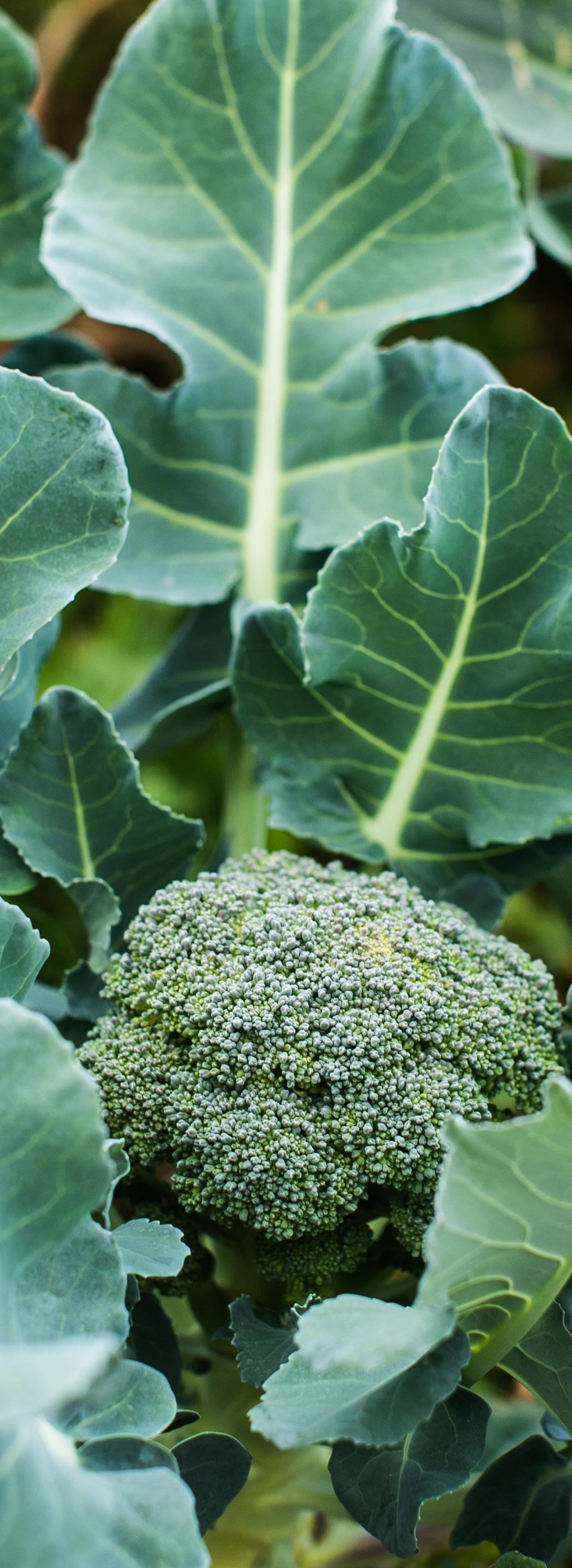
• 12th Old Farmer’s Day
• 13th Star Nursery 150
• 22nd National Nut Day
• 26th National Pumpkin Day

National Vegetarian Month
National Apple Month
National Pickled Peppers Month
National Pepper Month
National Pomegranate Month
12th–20th Get Outdoors Week
27th–12/5 National Tree Week
• Planting – November is a great time to plant Aloe, as it is a “cool-seasoned” succulent! Pick an area that has morning sun and afternoon shade, well-draining soil, and be careful not to over-water! Aloes, like all succulents, store lots of water in their leaves and hold onto it until it’s needed. In cooler temperatures, succulents will not transpire as quickly, which reduces the amount of water needed. For seasonal color, plant Cyclamen and Pansies! Cyclamen are exceptionally cold-tolerant and will provide beautiful color well into spring!
• Frost – Begin checking the forecast for freeze warnings, as the first frost typically arrives in mid-November. Remember, plants must be protected when temperatures drop below 28 degrees Fahrenheit. If you have young vines that are frost tender, lay them down and cover them with a thick layer of mulch for winter protection. (Don’t forget to uncover them in the spring.)
• Potted Plants – Bring cold-sensitive potted plants inside or to warmer areas. Small potted plants, such as succulents, can be brought indoors, while larger potted plants, such as citrus and pygmy palms, can be brought into a garage until the threat of freeze has passed.

• Cactus – Begin withholding water through February. By doing so, you will encourage dormancy and better protect the cactus from root rot or excessive freeze damage.
• Peppers – Pull pepper plants from your garden to allow the area to rest during the winter. Use this time to plant a different crop for the next season, as rotating crops helps to prevent soil-borne diseases and nutrient deficiencies.

• Yard Maintenance – Fallen leaves from healthy deciduous trees and conifers are nature’s mulch. Rather than raking up the leaves in your yard, consider leaving them to decompose, which will help add organic matter to desert-native soil.
• 1st World Vegan Day
• 5th Daylight Savings
• 10th Forget Me Not Day
• 11th Veteran’s Day
• 14th National Pickle Day
Friday, ocToBer 13, 2023
gaTes open aT 5:30 pM race sTarTs aT 7:00 pM

The Bullring aT The las Vegas MoTor speedway purchase your TickeTs online aT lVMs.coM


As the summer sun begins to wane, many desert gardeners might find that their once thriving landscape is now stressed due to the intense heat we experienced this year. Conditions such as high heat, dry spells, unsuitable plant selection and/or location, and extended daylight hours can put even the hardiest plants in a position to experience stress. Now that the temperatures are cooling off, we can step outside and conduct some seasonal maintenance to help our plant friends feel happy once more.
One of the primary causes of summer stress is when a plant’s root system is unable to supply water to the leaves fast enough to keep them replenished. This can result in scorched leaves or even leaf drop and can happen even if the ground ap-

pears to be wet. Many gardeners tend to over-water their plants during the summer in hopes of getting more water to the leaves; however, this usually leads to root rot.
conductors like rocks from around your plants and replace them with organic mulch, which will help insulate the root system, keeping it cool and moist.
Instead, opt for deep watering 2 to 3 times per week. This allows water to reach the deepest parts of the root system and gives the soil enough time to dry out, allowing the roots to absorb oxygen, which is crucial for water and nutrient transport. Additionally, consider removing high heat
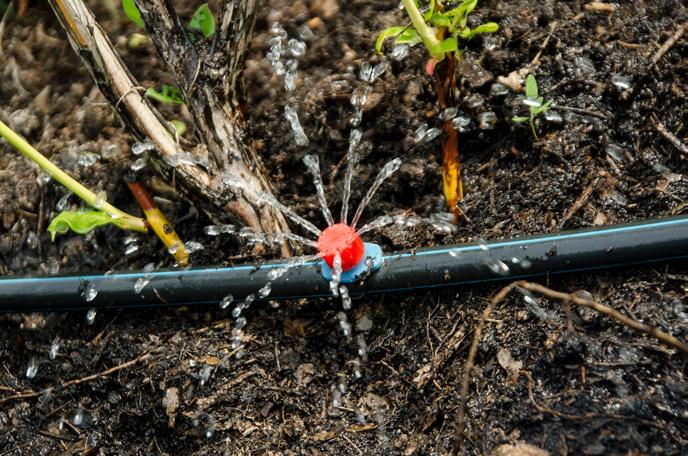
If you find that your plants have experienced summer stress, you should first consider the overall growing conditions of the plant. Although all plant varieties may experience some level of stress during the summer, you might find that there are plants in your landscape that have experienced extreme stress due to improper selection, location, watering, or fertilizing. To ensure your plants thrive, always double-check that you’ve chosen the right plant for the area and have provided it with the correct growing conditions.
The best way to do this is to conduct research on the specific needs
of each plant, then assess your yard and maintenance habits. Keeping a record or log of your plants in the landscape can prove invaluable. Take note of the variety, ideal growing conditions, the location you’ve selected, as well as the watering and fertilization schedule. By tracking this information, you can accurately evaluate your plant’s health and feel more confident in maintaining healthy growth.
For plants that have not experienced extreme summer stress and only require light maintenance, the first valuable step is to replenish the soil with organic matter. By doing so, you will not only improve the overall soil composition but will also provide vital nutrients to the plant. Roses are especially prone to nutrient deficiencies at the end of the summer season. A few common ones to look out for are nitrogen or magnesium deficiency or iron chlorosis.
white, dark brown, or purple spotting on older leaves or edges of the leaves curling downward. To treat, apply 1/4 cup of magnesium sulfate to the plant two or three times a year.

Proper pruning is another great way to help clean up your yard and remove the negative effects of summer stress. Different types of plants require different pruning, and understanding when and how to prune is essential for their health and appearance.
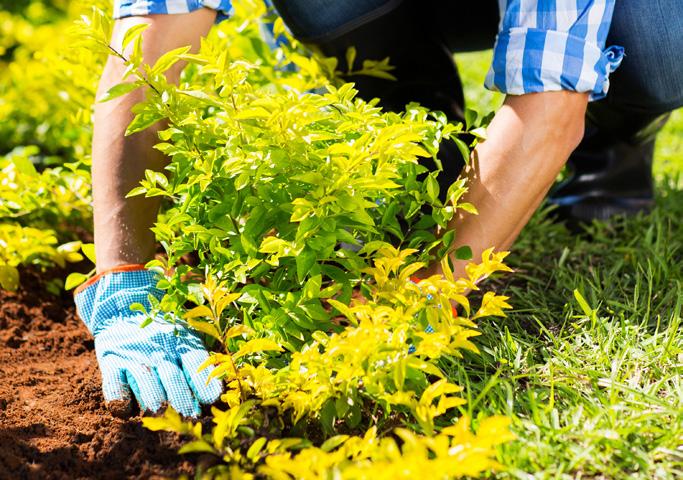
For trees, the focus should be on shaping young trees, correcting monsoon storm damage, cleaning up suckers growing at the base of the tree, and thinning out the crown if it appears too dense. However, it’s important to avoid hard pruning on deciduous trees until the winter months when the tree is in its dormant state.
Shrubs, on the other hand, benefit from light pruning after the blooming season to maintain a tidy appearance. Removing spent flowers from flowering shrubs can also help stimulate future blooms. For shrubs that are sensitive to cold temperatures, it’s best to wait until the spring to prune, as pruning right before winter can leave them vulnerable to frost damage.
can revitalize your rose by removing dead, diseased, or deformed canes. Also, be sure to eliminate any diseased or yellow leaves to prevent the spread of infection. Deadheading spent flowers will promote more blooms in the future, ensuring your roses remain vibrant and colorful. Like deciduous trees, hard pruning on roses should be kept for the winter months when it is in a dormant state.
Finally, when dealing with cacti and succulents, it’s important to check for diseased or damaged areas. If you notice any issues, cut back the affected parts severely, leaving only the healthy, uninfected sections. Agaves and yuccas will benefit from the removal of spent blooming stalks.
• Nitrogen deficiency: Symptoms include pale green or yellow coloring on older leaves, reduced growth, and smaller than normal leaves. To treat, slightly increase nitrogen and overall fertility of the soil.
• Iron chlorosis: Symptoms include pale green or yellow coloring on younger leaves or leaves with white veins. To treat, use chelated iron.
• Magnesium deficiency: Symptoms include yellow coloring and
Roses require special attention when it comes to pruning. Wait until temperatures drop below 100 degrees Fahrenheit before pruning them. You
As we embrace the cooler weather with open arms, don’t forget that your plants will be thankful for a little rejuvenating maintenance after working so hard to survive the high temperatures. For plants that didn’t last the summer, fall is the perfect time to replace them! Be sure to survey the natural light and air conditions of the location you intend to plant in and choose a variety that will thrive in those conditions. To learn more about your current or future plants, visit www.starnursery.com for a wealth of online gardening information, or stop by your favorite Star Nursery location and speak with one of our resident plant experts!
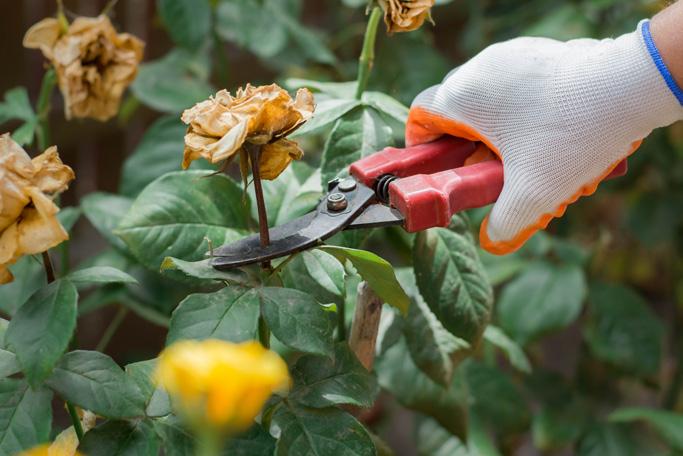
Have you ever found yourself looking out your window just to see grey, dull, and uninviting walls? Or perhaps you had an embarrassing encounter with your neighbor while sporting bedhead and your worst pajamas? Fortunately, there is an easy solution to get rid of these unappealing situations. Hedge shrubs and vines are an effective way to bring both functionality and beauty into your landscape.
Evergreen hedge shrubs will help to create bushy privacy year-round and won’t lose their leaves/needles in the winter. For those looking to add a European touch to their garden, vining plants are wonderful ways to add vertical charm to your landscape. There are many great options for hedge shrubs and vines that are suitable for our desert environment. A few are listed on the next page but more can be found by visiting www.starnursery.com
Whether you’re looking to cover that eyesore of a wall or yearning for a little more exclusion in your backyard, growing a wall of plants can help you achieve a more aesthetically pleasing and private retreat.
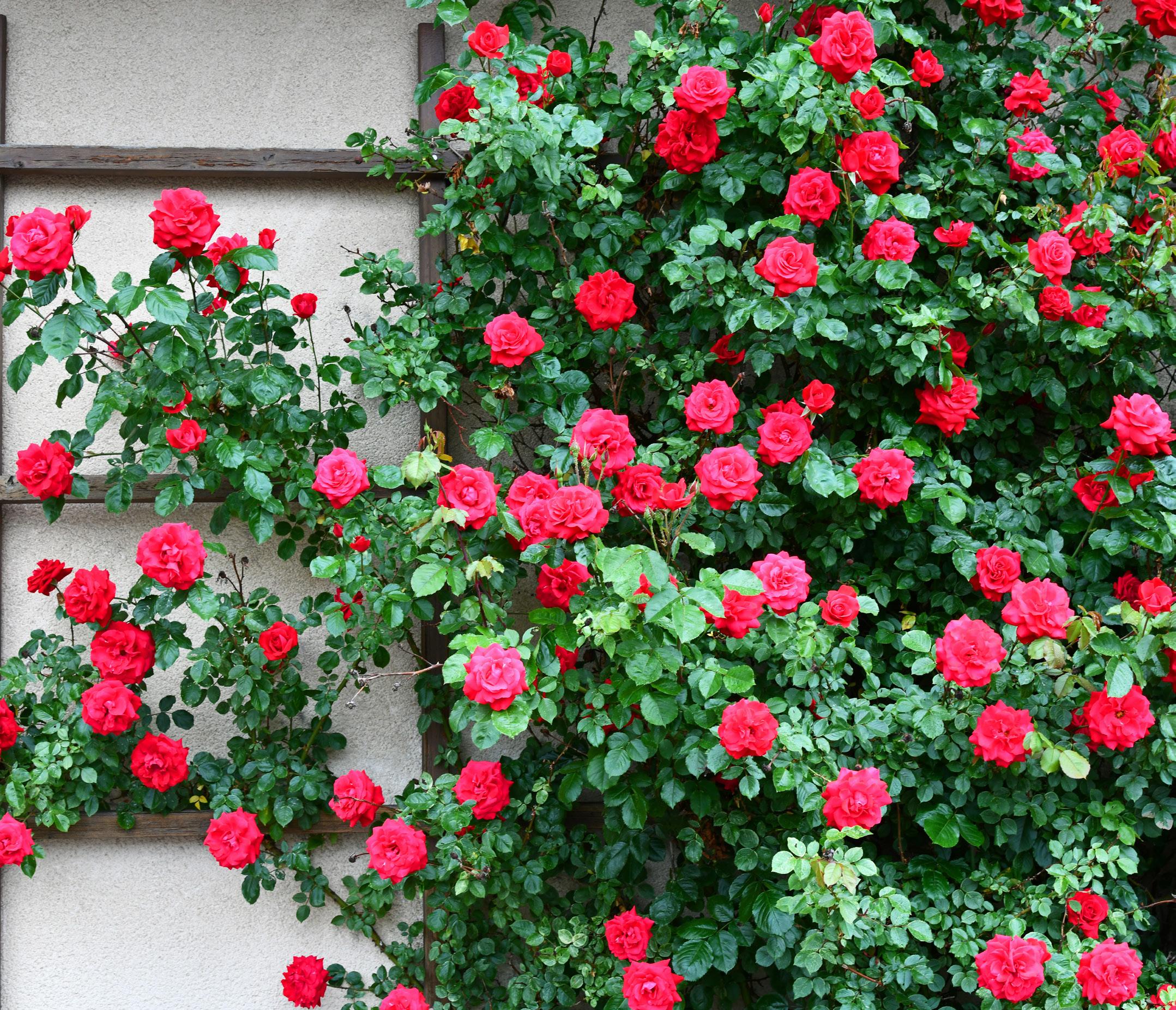
• Italian Cypress - Known for it’s elegant columnar shape, this plant will grow up to 5’ wide and 40’ tall.

• Privets - Because this shrub is dense, it is ideal for hedges and screens. Depending on the variety, this shrub can grow up to 5’ wide and 10’ tall.


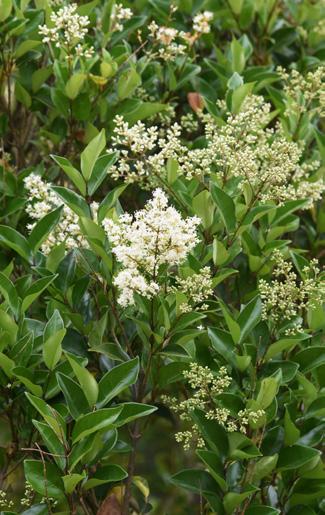
• Oleanders* - Perfect for those looking to add pops of red, pink, or white to their landscape. Mature plants may grow up to 10’ wide and 10’ tall. *May not be suitable for homeowners with pets.

• Bay Laurel - With a mature width of 6’ and height of 12’, this plant is not only great for privacy but a wonderful addition to culinary dishes.
• Xylosma - This plant’s glossy foliage is sure to add a layer of texture into your landscape design. Mature plants may grow up to 8’ wide and 8’ tall.
• Bougainvillea - Excellent for our hot environment, this plant blooms with vibrant shades of pink and purple. Up to 15’ mature height.
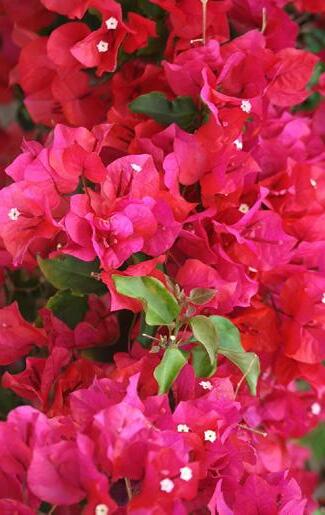
• Star Jasmine - Stunning white blooms and aromatic fragrance that is sure to attract helpful pollinators to your garden. Up to 10’ mature height.

• Tangerine Beauty Crossvine - Excellent in hot and sunny areas, this vine is a fast-grower with a mature height of up to 30’!
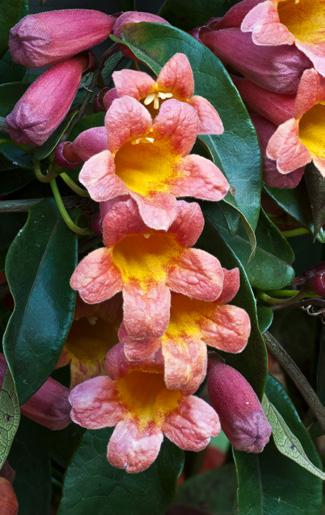
• Pyracantha - With beautiful white flowers in spring and red berries in winter, pyracanthas are excellent wall covers and drought-tolerant when established. Up to 10’ mature height.

• Climbing Roses - This nearly thornless vine will rapidly cover an unsightly area. Stunning white or yellow flowers will cover the vine for about 6 weeks in spring. Up to 20’ mature height.
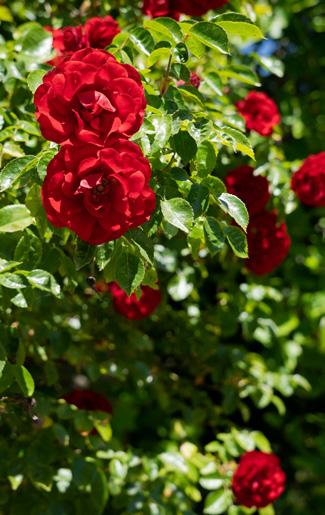
• Suitable Plant Selection- Choose plants that will fit your space at their mature height and can fully cover the wall or create a sufficient privacy screen. Additionally, ensure that you’ve chosen a plant with light requirements suitable for the area. Some plants prefer more sun, some prefer less - plant accordingly.
• Appropriate Spacing - Leave enough space between rows to avoid root crowding (about 1-2’ away from the center).
• Trimming Techniques - Trim the top and sides of hedges a few times a year, removing about half the length of new shoots, to keep your shrubs looking well-maintained.
• Consider Staking - If plants have weak trunks, provide staking for protection against wind-damage.
• Beware of Reflective Heat - Brick, stucco, and metal walls (especially those with sun from the south or west) will trap heat in the summer and reflect it onto nearby plants. Choose plants that are more likely to thrive in high-heat and/or protect the area with shade cloth or shady trees.
Have you ever heard of a fairy garden? Inspired by the mystical world of fantasy and folklore, DIY lovers have been getting creative and using common household items to build miniature landscapes that are perfectly suitable for a fairy. Typically constructed in small containers like pots, saucers, wooden boxes, or even old teacups, these gardens feature a
A wonderful project for all ages!
variety of carefully selected plants, natural elements, tiny decorations, and a unique touch of creativity!
Building a DIY fairy garden is a wonderful project for all ages and requires only a few inexpensive materials to get started. Take a look at these examples to spark your creativity and discover what you can craft! With so many items to choose from,

the possibilities are endless, as each miniature world becomes a reflection of your imagination. Once your fairy garden comes to life, capture its magic in a picture and share it with us on social media!!
@starnurserylv @starnurseryinc

Elevate your fall decorations with this autumn-inspired fairy house! To get started, pick a pumpkin, carve a door and a few windows, then use fallen leaves and seasonal flowers to decorate. This fairy house can be used as a stand-alone decorative item in your fall décor or as one piece in your fairy village!
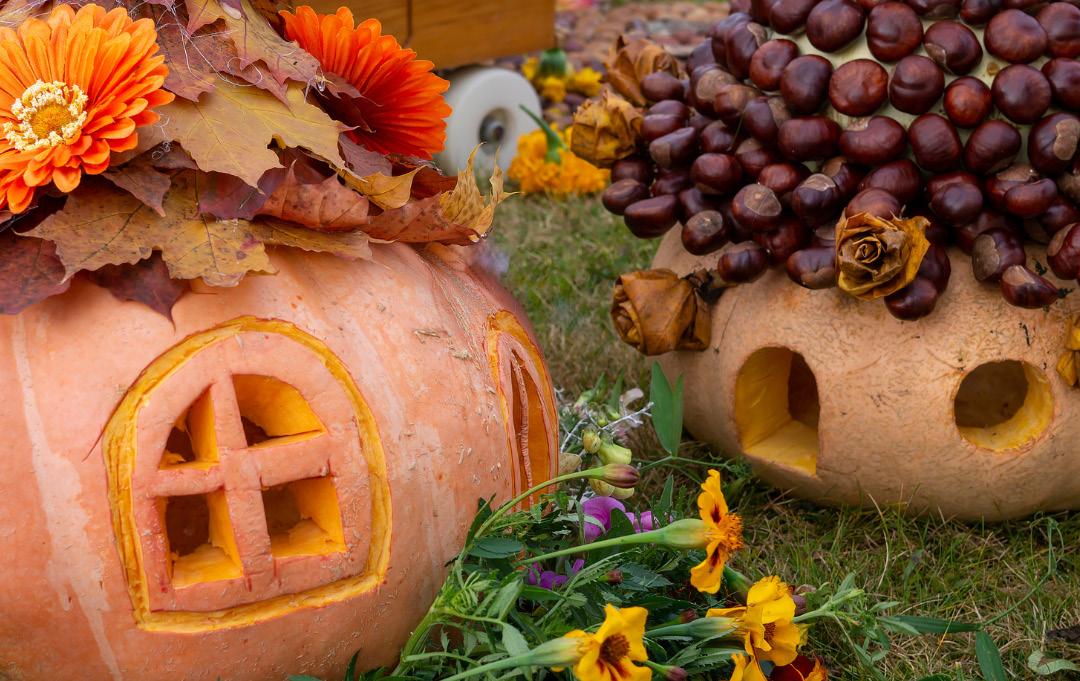
Break a pot? Upcycle it and make a dynamic miniature village! Use soil to create the base, then fill it with decorative elements such as moss, succulents, herbs, toy people and houses, or anything else you can find! Upgrade your design by using the remaining pieces of the broken pot to make stairs, pathways, or additional levels.


For a touch of natural charm in your fairy garden, scavenge your yard for small twigs and branches to use as decorative elements! The options are endless, as you can use them to make rooftops, fences, furniture, bridges, and more.

Want not, waste not! Turn your bottle caps and wine corks into magical mushrooms for your fairy garden. Paint the bottle caps red with white dots, then glue them to one end of the wine cork, and voila! You now have mushrooms to decorate your fairy garden. Pro tip: poke a toothpick halfway through the bottom of the cork and push it into the soil to keep your DIY mushroom in place.

Q: How can I help my scalded/sun-damaged roses?

A: Sun-scalded roses are often a sign that the rose is not getting enough water or that there is a build-up of salt in the soil. Without enough water, the plant’s internal processes are disrupted, compromising its ability to regulate temperature and withstand heat stress. If the edges of the leaves are turning brown, you may have a build-up of salt in the soil. To treat use Hi-Yield Iron and Soil Acidifier to neutralize the alkalinity. Always follow the instructions on the bottle. Reviving your roses after the stress of summer heat is simple and requires only a few steps! Start by trimming away burnt leaves and stems, then clean up any debris around the base of the plant. Next, check that the irrigation system is working properly and irrigate deeply to break up any salts that may have accumulated in the soil. Finally, offer your plant a good supply of nutrients to help it grow new stems and leaves by applying a fresh layer of Dr. Q’s Premium Paydirt Planting Mix and using Dr. Q’s Rose and Flower Food!
Q: What should I plant in my garden during the fall?

A: Did you know that fall is the best time for planting in the Southwest?! Many believe that spring is the best time for planting; and while it is a good time to plant, fall is the optimal time. Due to the soil still being warm from the summer temperatures, seeds are more likely to germinate and roots are more likely to establish quickly. Additionally, new plants are at higher risk of experiencing heat stress during the hot Southwest summers, so planting in the fall will allow plants to become better established before they face their first summer.
Although fall is a great time for planting everything, some common fall favorites are cool-season vegetables like spinach, turnips, lettuce, radish, carrots, peas, and onions; fruit and citrus trees; and fall flowers like petunias, marigolds, snapdragons, viola, and pansies! If you’re planning to add new plants to the landscape or conduct a lawn conversion, temperatures below 85 degrees Fahrenheit signal the perfect time to start.
Q: How do I protect my trees from wind damage?
A: It’s important to protect your tree from wind damage, not only for the health of the tree but also to potentially save you from property damage and safety hazards that coincide with weak trees. Young, less-established trees can be staked with non-abrasive ties and two lodge poles on opposite sides of the trunk. More established trees with a trunk diameter greater than 4 inches may need a third lodge pole. Take caution not to fasten the ties too tightly, as the tree will need some flexibility to develop trunk strength. Additionally, older trees with a large canopy will need to be thinned out every few years to allow the wind to pass through the branches instead of pushing against them. Focus on maintaining a balanced canopy to reduce the tree’s wind sail effect. Moreover, keeping your tree in good health will aid in wind damage prevention, as weak trees will not be as resilient to the effects of wind. If you’re concerned about your mature trees, consult with Joey Lynn, Star Nursery’s resident Certified Arborist. Email housecalls@starnursery.com to learn more about our consultation services.
Q: How do I know if I should use pre-emergent or post-emergent weed killer?
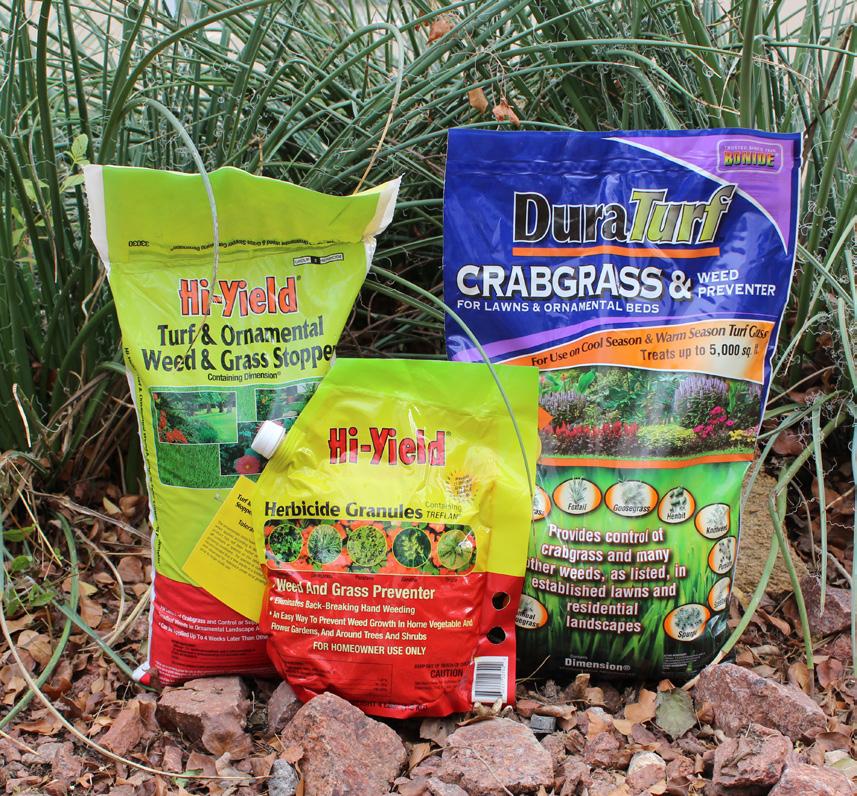
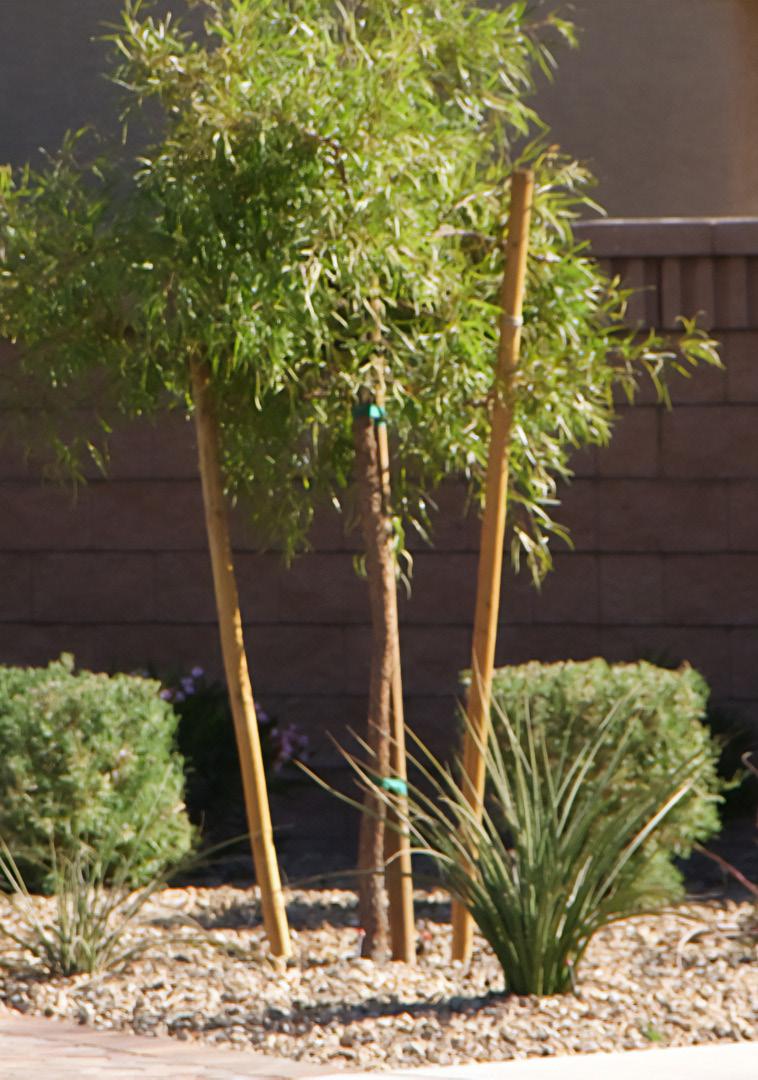
A: Pre-emergent weed killers are designed to be applied to the area before any weeds appear and rely on rainfall to distribute the product throughout the area. On the other hand, post-emergent weed killers are more potent and should be used when weeds are already visible. If you can already see weeds, you might need to use multiple treatment methods, as weeds are typically invasive, meaning they produce high quantities of seeds and grow quickly.

Get the help you need to make your landscape desert-friendly, and your irrigation system and home more water-efficient! These FREE CLASSES are taught by experts from the Southern Nevada Water Authority, in partnership with the Springs Preserve.

Whether you’re making a few water-efficient tweaks to your landscape or starting a full remodel or grass conversion, we can help. You’ll learn about landscape design, plants and the key components to have a successful landscape in the Las Vegas Valley climate.


IN-PERSON AT SPRINGS PRESERVE Sept. 28, 9 am-12 pm (Spanish)
ONLINE WEBINAR
Oct. 19, 2-3:30 pm

We’ll show you how to design and install a drip irrigation system. Learn how to select and assemble components and build a drip-system model right in the classroom. Drip irrigation is the watersmart way to ensure healthy, happy plants.
IN-PERSON AT SPRINGS PRESERVE Sept. 16, 9 am-12 pm
Oct. 7, 9 am-12 pm
Nov. 17, 9 am-12 pm (Spanish)
Learn how to conduct a home water audit using basic tools to find out where you’re using the most water in your home.
Kids can explore the importance of conservation with these short, hands-on classes. No pre-registration required, free for Springs Preserve members or with general admission.
IN-PERSON AT SPRINGS PRESERVE Saturdays & Sundays, 11 am & 1 pm
In-person classes are held at the Springs Preserve, 333 S. Valley View Blvd.
For additional landscaping resources, visit snwa.com.


Did you know that edible gardens can extend past the garden bed and into your landscape? Growing fruit and citrus trees are a wonderful way to add beauty and color to your yard, and gain feelings of abundance as you consume the fruits of your labor!

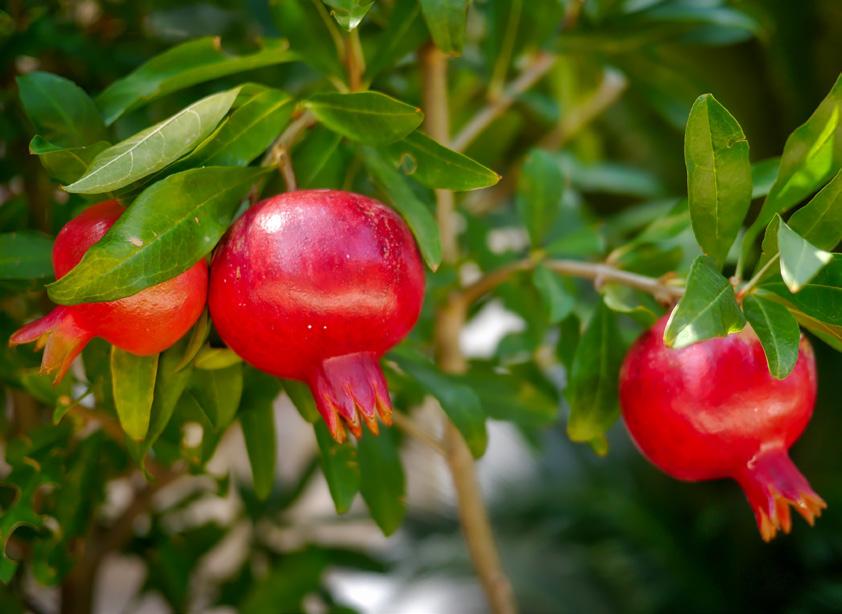
Fall is the ideal time to plant fruit and citrus! Although citrus can be planted year-round, the fall season is ideal for planting as it allows 6-9 months for the citrus tree to become established in its new home before it faces the summer heat. Stone fruit trees are even more sensitive to heat and may require a certain number of chill hours* during the winter to produce fruit, so it’s best to always plant fruit in the fall.
The type of fruit or citrus plant you choose is dependent on your personal choice and the locations available in the yard! For a full list of varieties available & their care instructions, scan the QR code!

Although both will grow well in our climate, citrus trees are more heat-loving while stone fruits prefer it colder. Citrus will thrive in full sun areas and stone fruits will grow better in areas with morning sun and afternoon shade. However, avoid placing either near block, rock, metal, or stucco walls as the heat of the sun will be intensely reflected onto the plant, possibly sending it into heat stress. If you’re hoping to place your fruit or citrus near a heat-reflecting wall, consider covering the wall with climbing plants, hedge shrubs, shady trees, or shade cloth to keep the wall shaded and cool. Some desert gardeners prefer to utilize pots and containers for edible tree varieties, as it allows them to move the tree to the best-growing area during different times of the year. This option can also help to elevate your landscape design!
When planting, ensure the area is well-draining, amend the native soil with Dr. Q’s Premium Paydirt Planting Mix, and fertilize with Dr. Q’s Organic Stardust Fertilizer. During the growing season, it’s best to thin the fruit when it is about the size of a dime to allow approximately 3-4 inches of growing room between each fruit.
In February, May, and September, fertilize with Dr. Q’s Organic Citrus or Fruit Fertilizer.** In the summer, protect tree trunks from damage by diluting Go Natural Trunk Paint with water. As always, read and follow the directions on the bottle. In the winter, citrus will need to be protected from colder temperatures by using a cover like burlap or N-Sulate, and fruit trees will require a dormancy spray like Liqui-cop or Copper Fungicide to prevent fungus and insect problems. In January, stone fruit trees will benefit from pruning during dormancy to help encourage fruit production in the following season. For additional information on fruit and citrus tree care, check out our website or stop by your favorite Star Nursery location.
*temperatures below 45 degrees Fahrenheit. **Avoid fertilizing if buds or flowers are already present. Doing so will encourage leaf growth rather than fruit growth, so you’ll want to wait until fruit production finishes



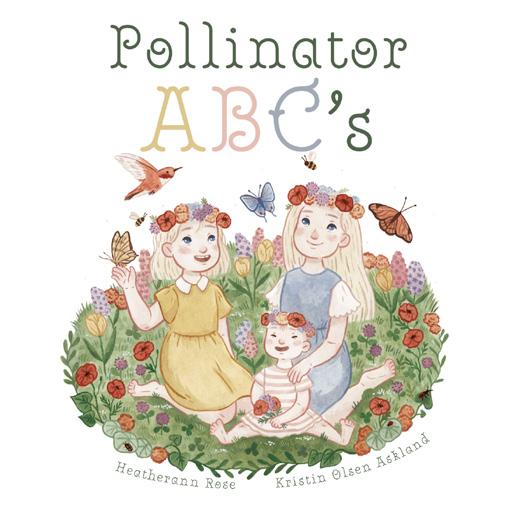
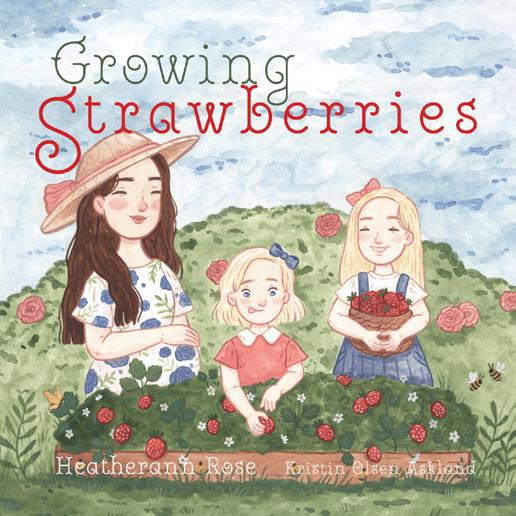

In a world colored by the magic of “La Vie En Rose,” Heatherann Rose, a local children’s book author, shares her passion for nature and education through The Rose Sisters Garden Series. Comprised of three books, Growing Roses, Growing Strawberries, and The Pollinator ABCs, this series invites young readers to step into the garden, explore, and learn about their environment.

Heatherann’s journey as an author and gardening enthusiast began during challenging times as she sought solace in her garden amidst the COVID-19 crisis. With a bachelor’s degree in elementary education, she found that her favorite classroom setting was among the flowers, bees, and trees. As she transformed her backyard into a flourishing ecosystem, she also witnessed curiosity and joy as her daughters played in and explored the garden. Inspired by her experiences, Heatherann began writing The Rose Sisters Garden Series to help families learn, play, and grow together.
Written for early learners to second-grade readers, each book in the series is comprised of 32 pages of rhyming dialogue that invites families to embark on a gardening adventure together, cultivating a deep-rooted connection with the environment. Bound by a love for nature, Audrey, Poppy, and Genevieve explore the whimsy and wonder of their garden and teach readers about the ecosystem and how to grow their favorite plants!


Beyond her books, Heatherann extends her passion for education through her Growing Kids learning program. Schools and libraries can schedule author visits comprised of a book reading and learning activity. With her experience in the classroom, she keeps students interested and inspired through her readings, interactive games, and learning presentations. Not only is Growing Kids available for schools and libraries, but local businesses looking to engage with their community can also book Heatherann to host a gardening workshop.

The Rose Sisters are excited to share all that they know about gardening and invite you to step into their world where gardens whisper tales of growth, where every petal holds a story, and where the beauty of life reveals itself in the most unexpected ways. To learn more about Heatherann Rose, The Rose Sisters Garden Series, or schedule an event, visit her website: at www.heatherannrose.com!

Since its opening in 2008, Star Nursery on Tropicana has been a favorite spot for locals in the western part of the Las Vegas Valley. Amidst a diverse and growing community, the nursery has welcomed many homeowners and landscapers who are eager to bring their landscape dreams to life. Notably, this location has also hosted various community events, including informational seminars and fun-filled garden workshops for kids.
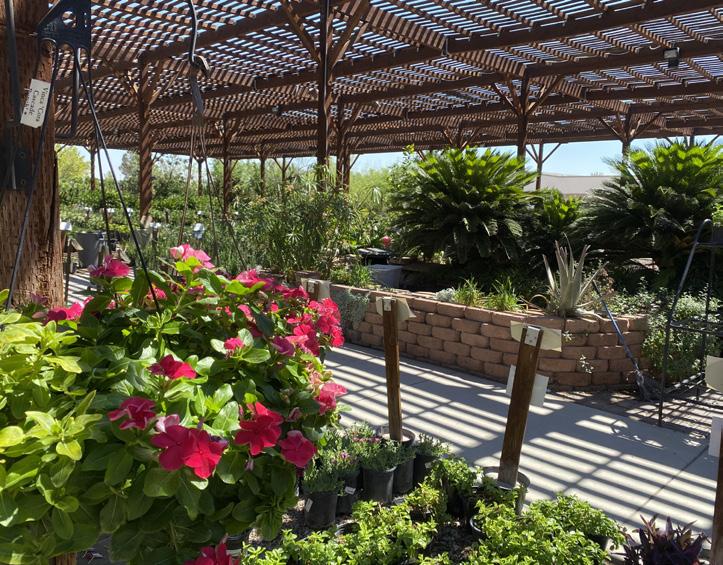
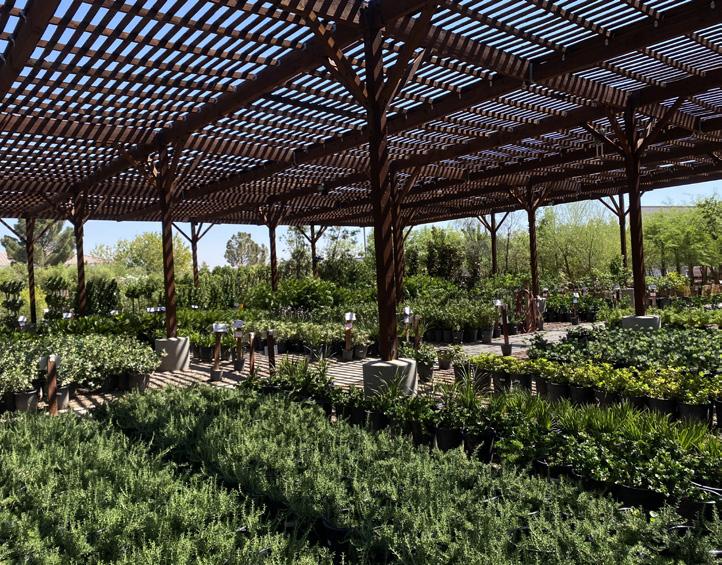
Although the Tropicana location

may be smaller than some of our other stores, it never falls short on quality plant material. In fact, Thomas, the head foreman at Tropicana, has years of expertise and works hard to keep the plants healthy and happy! At Star Nursery, our customers can always count on being able to shop for a diverse supply of plants at an affordable price. Fun fact: out of all Star Nursery locations, houseplant hunters are most likely to find hidden gems at this location!

At the heart of this location are
our exceptional team members who work hard to serve our community of gardeners. Committed to continuous learning, the staff here boasts the highest number of graduates from the Nevada Nurserymen program across the entire company. No matter your experience, our team is always ready to help you overcome the challenges of desert gardening. The next time you’re looking for a new houseplant, want to convert your yard, or need gardening advice, stop by our Tropicana location!
Meet Sue Lewis, the Rock Yard Manager at Star Nursery’s Eastern location in Las Vegas, NV. Sue has an impressive history in the landscaping industry, with over 25 years of experience managing landscape companies. With her prior work experience, Sue has a wealth of knowledge that she often shares to help homeowners make the right decision for their landscape. In her time with Star, she has worked in many nursery areas, including multiple sales and management positions. Most recently, she has worked hard to expand the rock yard and is excited about the new product offerings that will be coming in. Beyond work, Sue finds joy in spending time with her furry companions, as well as her family and friends. Sue’s expertise and commitment to customer satisfaction make her an outstanding member of the Star Nursery team, as she continues to make a positive impact in the rock yard and beyond.

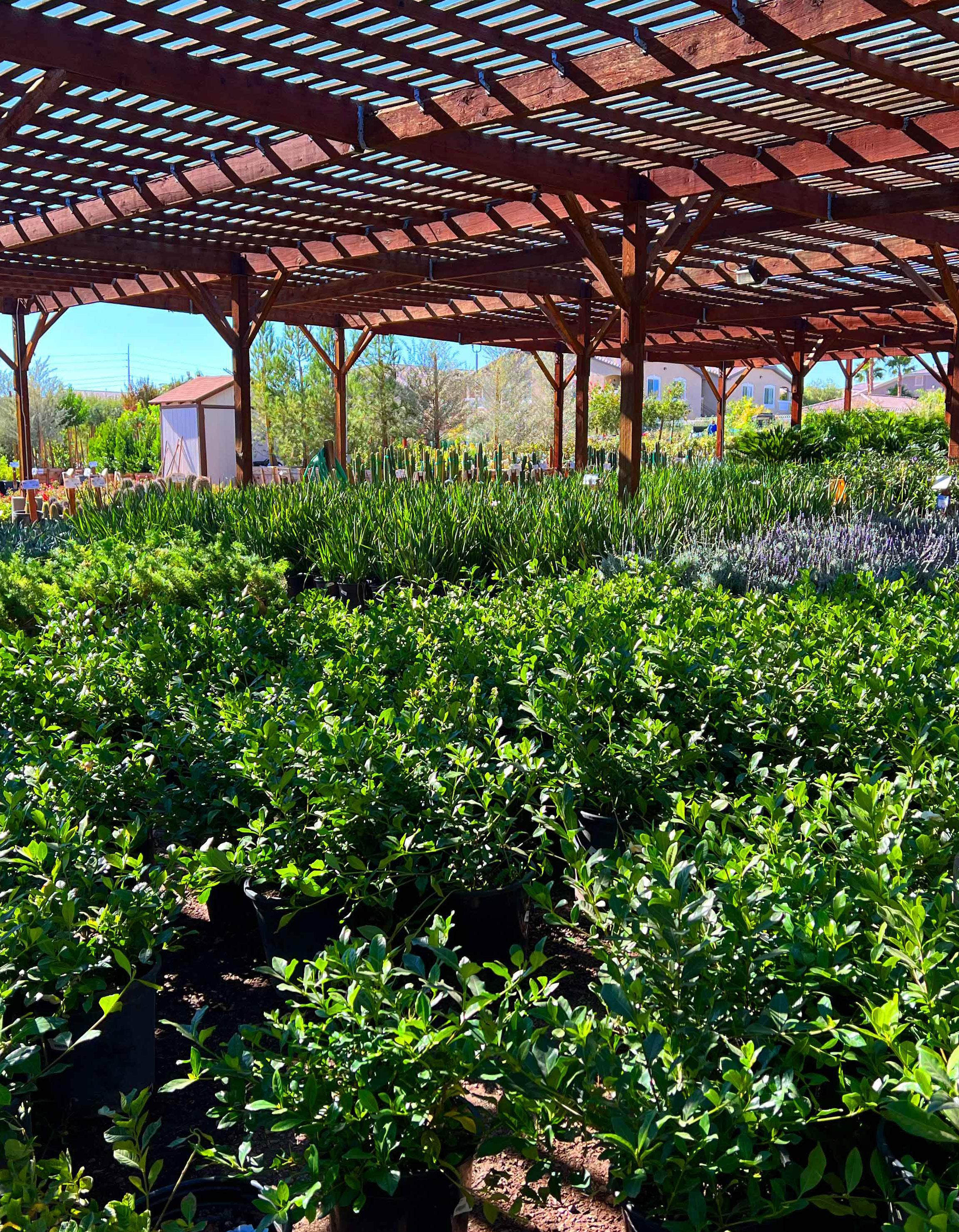
Meet Rito Reyes, the Assistant Manager at Star Nursery’s Mesquite, Nevada location. With 8 years of experience, Rito has worked in many nursery areas, participated in numerous continuing education programs at Star, and learned from multiple mentors. Now, the student has surpassed the teacher, as he now trains new employees and enjoys teaching the ins and outs of landscape supply. Most of all, he enjoys it when gardeners visit the nursery with a landscape problem and leave with smiles on their faces. In fact, he has recently been recognized for his outstanding sales service! Outside of work, Rito enjoys spending time with his kids while visiting the racetrack, going out on new adventures, cooking, or watching movies. With his exceptional customer service and commitment to learning and teaching, Rito is a shining member of the Star Nursery team.

Meet Ashley Lambert, the Assistant Manager at Star Nursery’s Bullhead, Arizona location. Before working at Star, Ashley had limited plant knowledge but was inspired to learn more by her fiancé and father-in-law working in the landscape industry. In her time with Star, she has worked hard to develop new skills and was recently promoted to Assistant Manager, a position she is proud to flex her leadership skills in. In her day-to-day, Ashley finds joy in witnessing the constant growth and life in the yard, sharing her passion with others, and leading by example. In her personal time, she enjoys gardening and spending time by the river with family and friends. With her passion and dedication, Ashley is a rising star within the Star Nursery team.
 Sue Lewis
Rock Yard Manager
Ashley Lambert
Assistant Manager
Rito Reyes
Assistant Manager
Sue Lewis
Rock Yard Manager
Ashley Lambert
Assistant Manager
Rito Reyes
Assistant Manager









